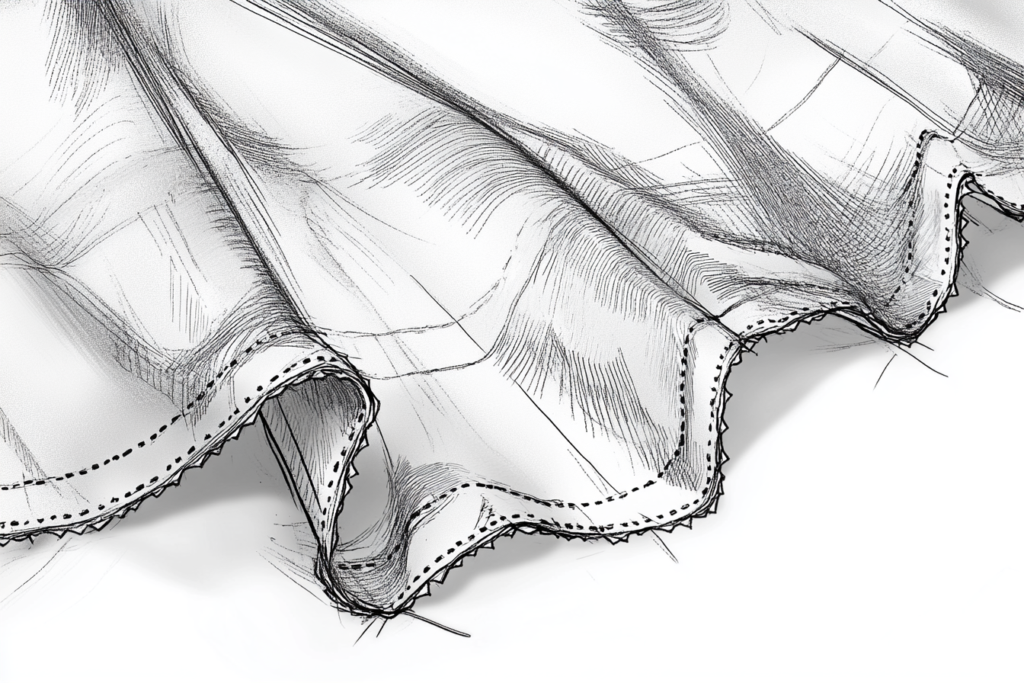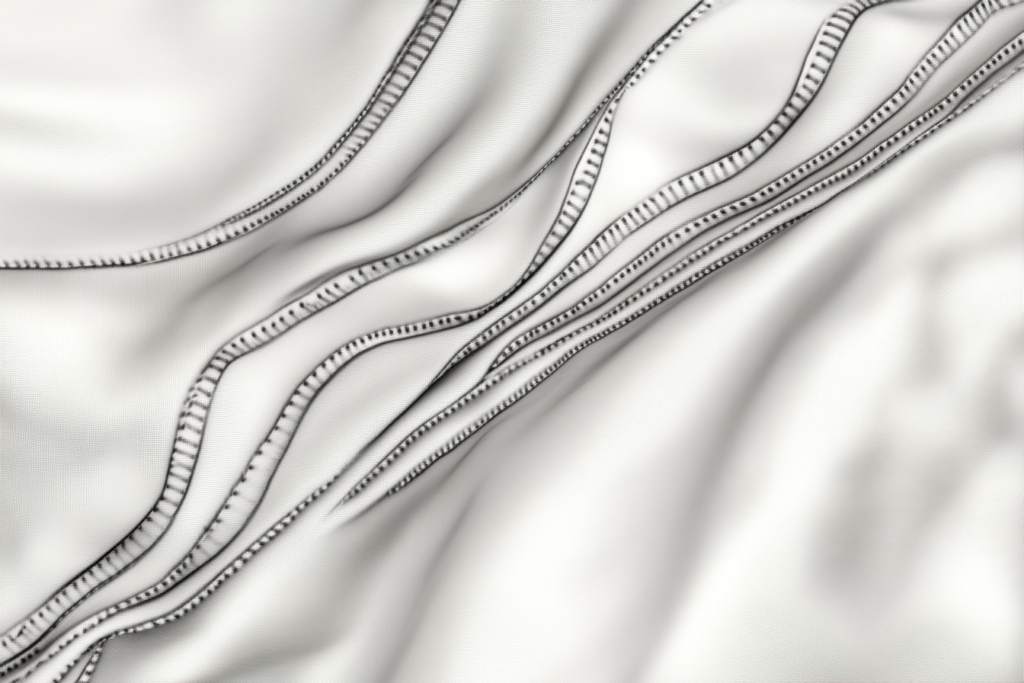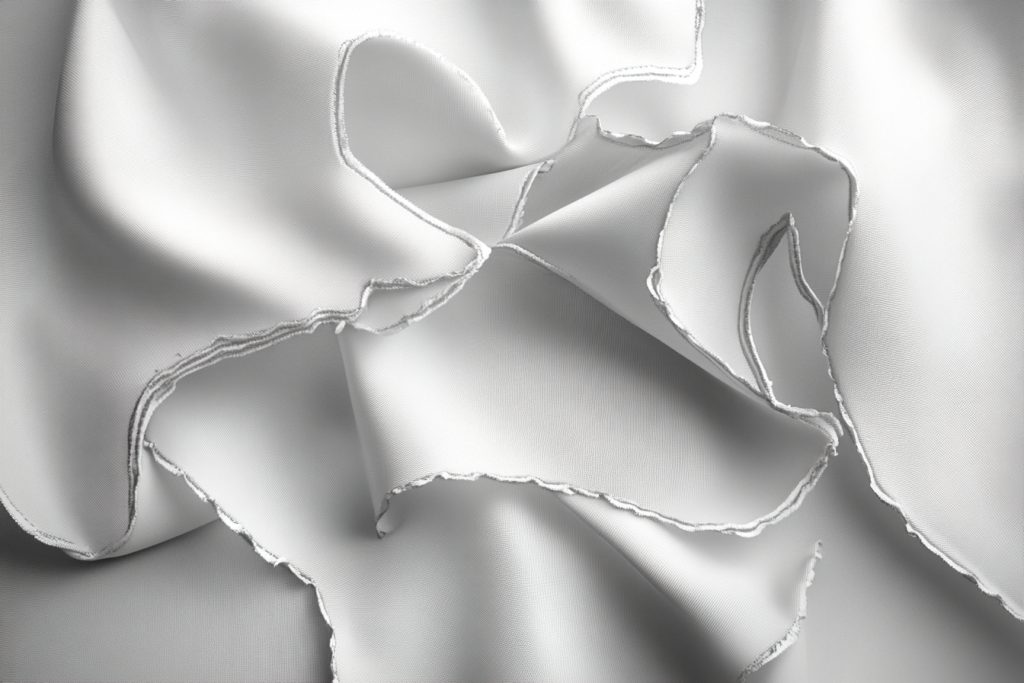French Seam (SSae): A Perfect Finish for Delicate Fabrics
Meta Description: The French seam offers a clean and durable finish for garments. Learn how this seam technique ensures no rough edges and a polished look.
What is a French Seam?
The French seam, also known as SSae, is a beautiful and functional technique used in garment construction, particularly for delicate fabrics like silk, chiffon, and lightweight cotton. It involves sewing the fabric together twice, enclosing the raw edges within the seam itself, leaving no exposed rough edges. This method results in a neat, clean finish that prevents fraying, making it ideal for high-quality garments that require a polished appearance.
In the French seam, the edges of the fabric are encased in the seam, eliminating the need for additional finishing methods like overlocking or binding. The result is a professional, durable seam that enhances the longevity of the garment, even with fabrics that are prone to fraying.


How to Sew a French Seam: Step-by-Step
Sewing a French seam requires precision, but with the right technique, it’s a straightforward process. Here’s a detailed guide to sewing this type of seam:
Step 1: Stitch the Fabric Right Sides Together
Start by placing the right sides of your fabric together, as you would for a regular seam. This is the opposite of the typical process, where you usually place the fabric’s wrong sides together first. Sew the seam with a narrow stitch, usually around 1/4 inch (0.6 cm) from the edge.
Step 2: Trim the Excess Fabric
After you’ve sewn the initial seam, trim the excess fabric very close to the stitches, leaving about 1/8 inch (0.3 cm). This ensures that the excess fabric won’t bulk up inside the seam once it’s turned.
Step 3: Press the Seam
Gently press the seam to one side, making sure that the seam allowances are neat and well-defined. Use a pressing cloth to protect the fabric from direct heat, especially if you’re working with delicate materials.
Step 4: Turn the Fabric to the Wrong Sides
Next, turn the fabric so that the wrong sides are facing each other. This is the key to the French seam—by enclosing the raw edges inside, the seam will remain clean and protected.
Step 5: Stitch Again
Sew the seam again, this time enclosing the raw edges inside the fold. Sew close to the previous stitching, around 3/8 inch (1 cm) from the edge, ensuring that the raw edges are fully hidden.
Step 6: Press Again
Once the second stitch is in place, give the seam a final press. This will ensure the French seam is crisp and neat, with no raw edges visible on the inside of the garment.
Why Choose a French Seam?
The French seam offers several benefits, making it a popular choice in garment construction, especially for delicate and lightweight fabrics.
1. Clean and Professional Finish
French seams are prized for their clean, finished look. Because the raw edges are enclosed within the seam, they won’t fray or unravel, making the inside of the garment just as polished as the outside.
2. Durability and Strength
Despite its delicate appearance, a French seam is actually quite durable. The second stitch helps reinforce the seam, providing extra strength and ensuring the garment holds up over time.
3. Ideal for Delicate Fabrics
French seams are particularly beneficial for fabrics that tend to fray easily, such as silk, chiffon, tulle, and lightweight cotton. This method prevents the fabric from unraveling, extending the life of the garment.
4. No Need for Additional Finishing
One of the standout features of the French seam is that it eliminates the need for additional edge finishes, such as overlocking or binding. The enclosed seam is both the construction and the finish, streamlining the sewing process.
5. Smooth Interior
Because the seam is encased, there’s no rough or raw edge that could irritate the skin. This is especially important for garments like blouses, dresses, and other items worn directly on the skin.
When to Use a French Seam
French seams are a great choice for specific types of garments and fabrics. Here are some scenarios where this seam technique is ideal:
1. Delicate Fabrics
For soft, lightweight fabrics that are prone to fraying, such as silk, chiffon, tulle, and organza, French seams provide a clean, durable finish that prevents the fabric from unraveling.
2. High-End Garments
French seams are commonly used in high-end and designer clothing. Their refined look adds a level of sophistication and craftsmanship to any garment.
3. Lingerie and Intimates
Since the French seam encloses raw edges, it’s perfect for lingerie, bridesmaid dresses, and other intimate garments, where the interior finish must be both durable and comfortable.
4. Sheer or Semi-Sheer Fabrics
French seams are great for sheer fabrics like lace or organza. The enclosed seam not only adds durability but also keeps the delicate fabric from becoming compromised by fraying or unravelling.
French Seam vs. Other Types of Seams
Here’s a comparison of the French seam to other popular seams used in garment construction:
| French Seam | Overlocked Seam | Plain Seam |
|---|---|---|
| Encloses raw edges inside, offering a clean finish. | Requires a serger or overlock machine to finish edges. | Simple, basic seam with raw edges that may fray over time. |
| Ideal for delicate fabrics and high-end garments. | Good for durable fabrics, but may not be as neat inside. | Common in basic garment construction; raw edges often need additional finishing. |
| Requires more time and precision to sew. | Fast and efficient, but may not provide the same refined finish. | Quick and easy to sew but less polished. |
Best Fabrics for French Seams
While French seams are versatile and can be used with many fabrics, they are particularly effective with delicate, lightweight, or sheer fabrics. These fabrics tend to fray easily, so enclosing the raw edges with a French seam helps to prevent damage. Ideal fabrics include:
- Silk
- Chiffon
- Tulle
- Lightweight cotton
- Linen
- Organza
- Crepe
For heavier fabrics such as denim or canvas, other seam finishes like overlocking or binding might be more appropriate, as the French seam is not as suitable for thicker materials.
Conclusion: The Elegance of the French Seam
The French seam is an elegant, functional technique that provides a clean, durable finish for garments, particularly those made from delicate fabrics. By enclosing the raw edges within the seam, this method not only prevents fraying but also ensures a polished and professional look inside and out. Whether you’re sewing luxury items or working with sheer fabrics, the French seam offers an excellent way to elevate the overall quality of your garments.



